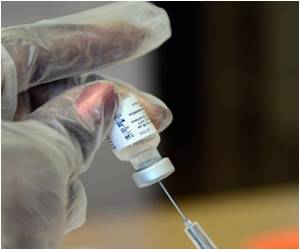Three to five protective antigens are present in vaccines for whooping cough, the presence of which are critical to the vaccine's effectiveness.

"These findings tell us that there is an evolutionary advantage to lacking the protein that may have important vaccine implications," says first author Lucia C. Pawloski, of the Centers for Disease Control and Prevention, Atlanta, GA.
In the study, the researchers screened 1,300 isolates dating from 1935-2012, obtained from outbreak and surveillance studies. They used polymerase chain reaction (PCR) to identify DNA insertions into the pertactin gene, which prevents expression of that gene. The earliest such isolate was from 1994, and the next, 2010. There were 267 such isolates.
Thanks to the vaccine's other antigens, the vaccine remains effective, but that does not mean public health authorities should be complacent.
"This recent and drastic change in response to a particular vaccine antigen highlights the need to continue monitoring the circulating bacterial population to allow us to better predict future potential vaccine antigens and respond to the recent upsurge in pertussis," says Pawloski.
It is particularly important that pregnant women be vaccinated against pertussis, since infants are at greatest risk for having severe, potentially life-threatening complications from pertussis.
Advertisement
Those antibodies provide the baby with some protection that lasts until it is old enough to be vaccinated. However, fewer than 10 percent of pregnant women are being vaccinated.
Advertisement
The rise in cases may be due to more sensitive and specific diagnostics, better awareness of the disease among both doctors and the general public, and waning immunity from the current acellular vaccine. Although some people do not get their children vaccinated, and such children are at least eight times more likely to get the disease than those who receive all five recommended doses they are not the driving force behind the large scale outbreaks or epidemics, says Pawloski.
Source-Eurekalert















